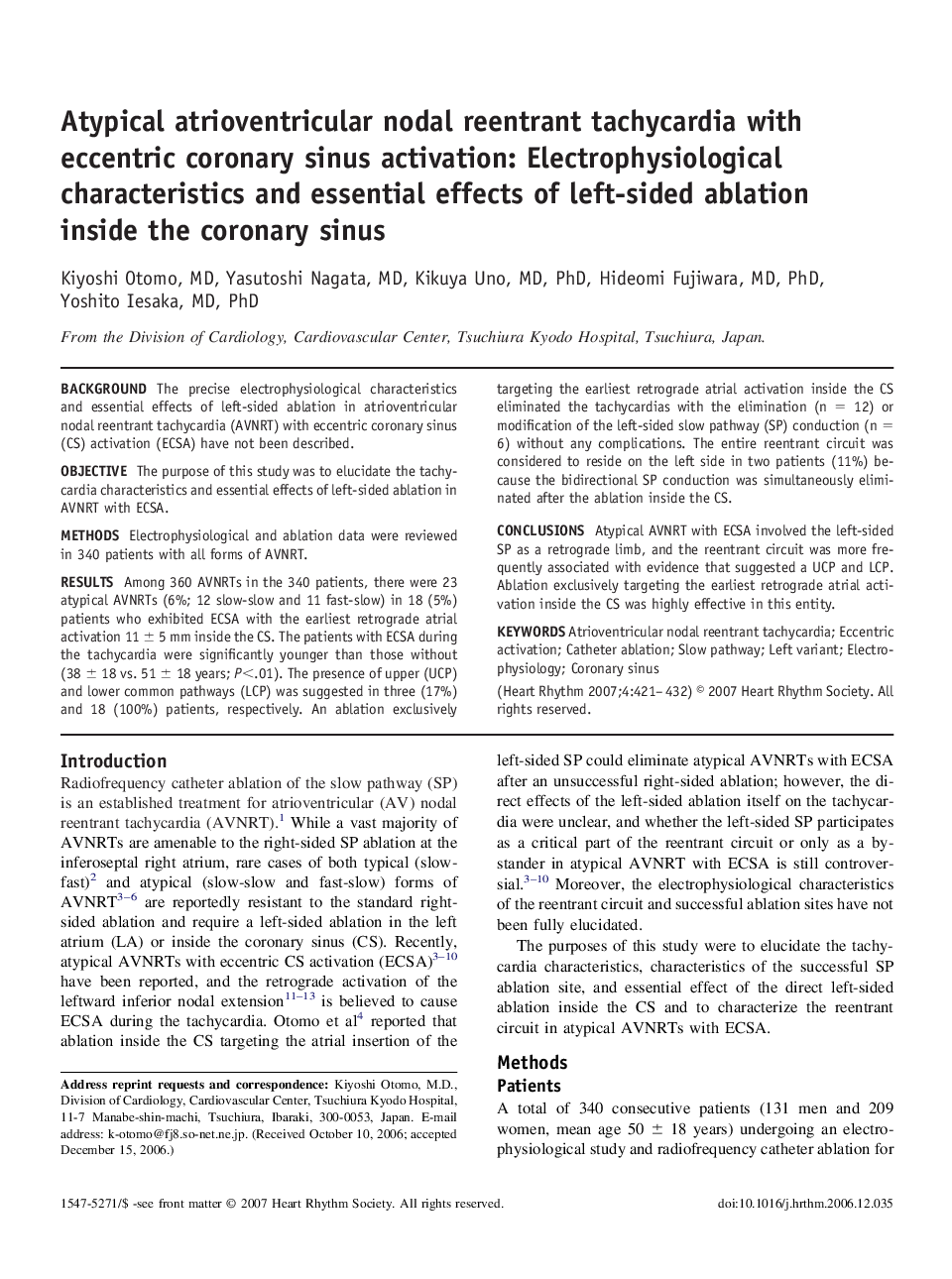| Article ID | Journal | Published Year | Pages | File Type |
|---|---|---|---|---|
| 2924294 | Heart Rhythm | 2007 | 12 Pages |
BackgroundThe precise electrophysiological characteristics and essential effects of left-sided ablation in atrioventricular nodal reentrant tachycardia (AVNRT) with eccentric coronary sinus (CS) activation (ECSA) have not been described.ObjectiveThe purpose of this study was to elucidate the tachycardia characteristics and essential effects of left-sided ablation in AVNRT with ECSA.MethodsElectrophysiological and ablation data were reviewed in 340 patients with all forms of AVNRT.ResultsAmong 360 AVNRTs in the 340 patients, there were 23 atypical AVNRTs (6%; 12 slow-slow and 11 fast-slow) in 18 (5%) patients who exhibited ECSA with the earliest retrograde atrial activation 11 ± 5 mm inside the CS. The patients with ECSA during the tachycardia were significantly younger than those without (38 ± 18 vs. 51 ± 18 years; P<.01). The presence of upper (UCP) and lower common pathways (LCP) was suggested in three (17%) and 18 (100%) patients, respectively. An ablation exclusively targeting the earliest retrograde atrial activation inside the CS eliminated the tachycardias with the elimination (n = 12) or modification of the left-sided slow pathway (SP) conduction (n = 6) without any complications. The entire reentrant circuit was considered to reside on the left side in two patients (11%) because the bidirectional SP conduction was simultaneously eliminated after the ablation inside the CS.ConclusionsAtypical AVNRT with ECSA involved the left-sided SP as a retrograde limb, and the reentrant circuit was more frequently associated with evidence that suggested a UCP and LCP. Ablation exclusively targeting the earliest retrograde atrial activation inside the CS was highly effective in this entity.
